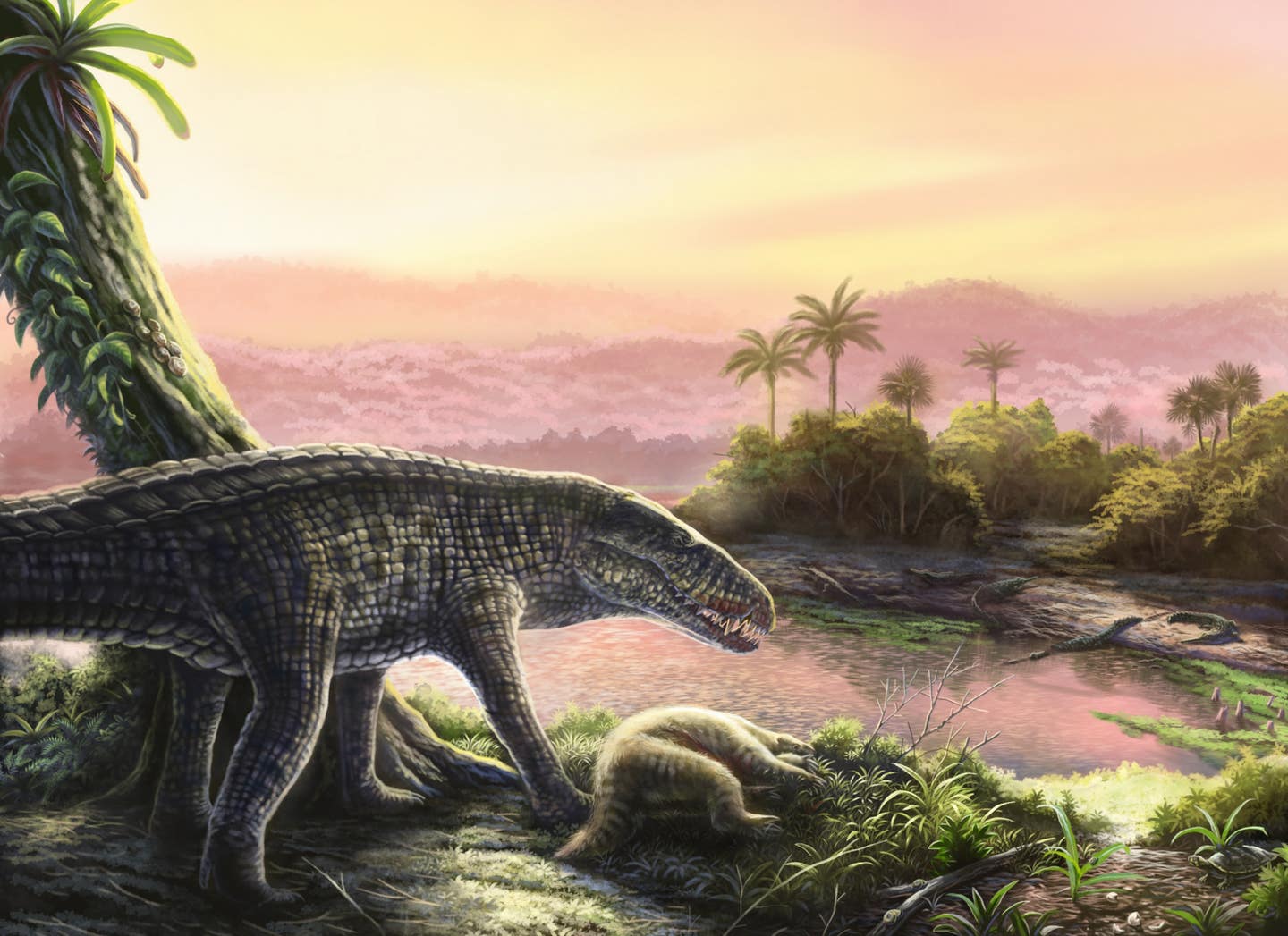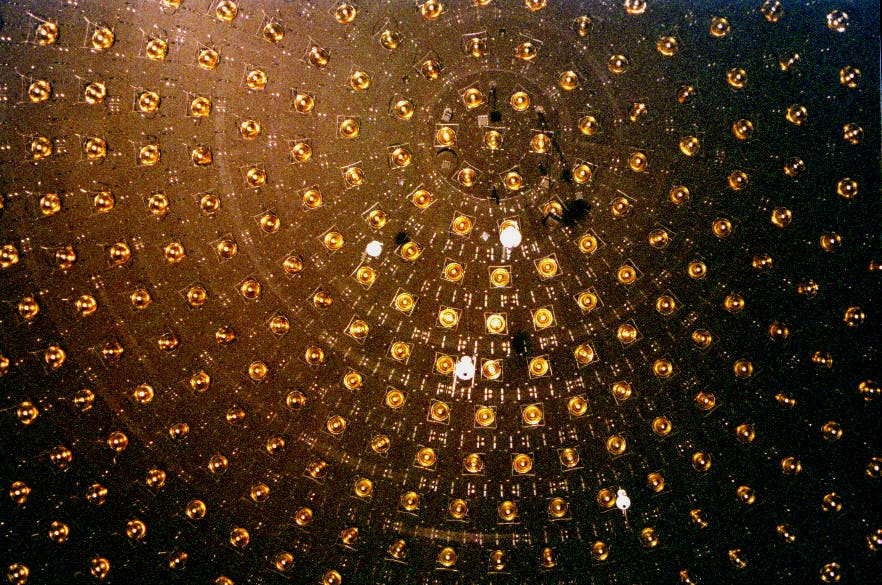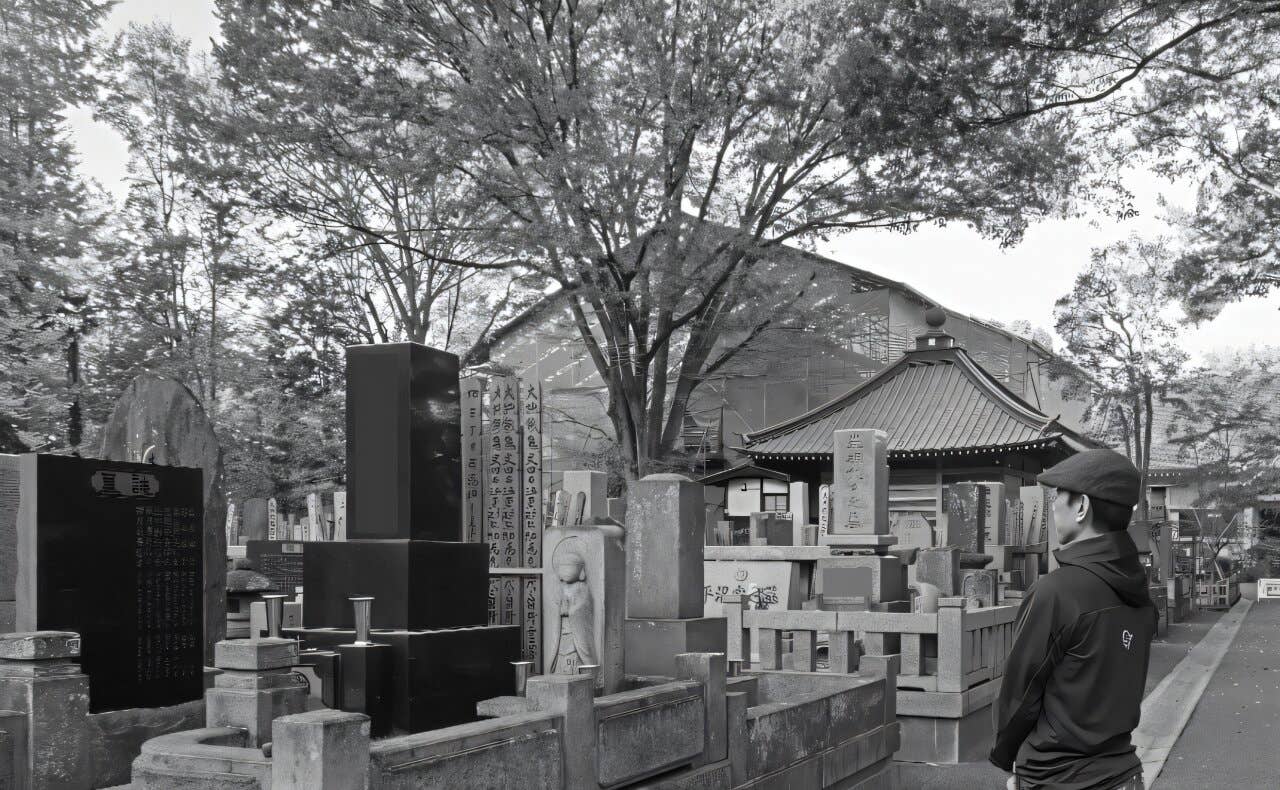Giant crocodile-like predators once ruled the Caribbean
Fossils show that large land-dwelling crocodyliforms once dominated Caribbean islands, reshaping what we know about island evolution.

New fossil finds reveal land-dwelling crocodile-like predators once ruled the Caribbean. (CREDIT: Florida Museum image by Jorge Machuky)
A long time ago, strange predators roamed the Caribbean — not just birds and snakes, but land-dwelling crocodiles that sprinted after prey like hungry wolves. These ancient reptiles weren’t what most people picture when they hear the word "crocodile."
Built for speed, not water, they looked more like greyhounds with armored skin and dagger-like teeth. And for decades, scientists thought they never made it to the islands. That changed when fossil hunters uncovered the unmistakable remains of these top predators in the Dominican Republic.
Crocodiles That Ruled the Land
These predators were part of a group known as sebecids. Unlike modern crocodiles, sebecids lived almost entirely on land. They had long legs, sharp serrated teeth, and could grow to nearly 20 feet long. They evolved in South America and dominated the land after the dinosaurs disappeared. For a long time, scientists believed sebecids went extinct about 11 million years ago — and only ever lived on the mainland.
That belief started to unravel with the discovery of some unusual fossilized teeth on Caribbean islands. In the 1990s, researchers found a pair of jagged, meat-tearing teeth in Cuba. Later, another turned up in Puerto Rico, 29 million years old. But teeth alone weren’t enough to confirm what animal they came from. It wasn’t until 2023 that a tooth found in the Dominican Republic, alongside two vertebrae, finally gave scientists enough evidence.
That fossil belonged to a sebecid. And it wasn’t just any sebecid — it was part of the last surviving group of its kind, living on Caribbean islands millions of years after going extinct in South America. That changes what scientists thought they knew about Caribbean history. It turns out, these islands may have been a final refuge for some of Earth’s most powerful predators.
The GAARlandia Connection
This discovery supports an old idea called the GAARlandia hypothesis. Scientists believe that a land bridge or chain of islands once connected northern South America with the Greater Antilles — which includes Cuba, Hispaniola, and Puerto Rico. This connection likely existed around 33 to 35 million years ago, during a time when sea levels dropped and parts of the ocean floor rose.
Related Stories
If true, this pathway could explain how large land animals like sebecids reached the islands. In fact, some geologists have found evidence that other Caribbean islands were exposed and reachable more often than previously thought. This would have made it easier for South American animals to travel and colonize new environments.
According to Lazaro Viñola Lopez, lead author of the study and graduate researcher at the University of Florida, the fossils change the narrative. “That emotion of finding the fossil and realizing what it is, it’s indescribable,” he said.
Jonathan Bloch, a paleontologist at the Florida Museum of Natural History, shared the excitement. “You wouldn’t have been able to predict this looking at the modern ecosystem,” he said.
A Different Kind of Island Predator
The Caribbean’s current ecosystems are known for having small, endemic predators. Birds, snakes, and smaller crocodiles sit at the top of the food chain. These species evolved in a world where larger predators were absent. Because of that, island ecosystems often show unique traits like flightless birds, overactive smaller predators, and less fear in prey species.
This lack of large carnivores led scientists to believe that overwater dispersal — where animals rafted across the sea — shaped most of the island’s biodiversity. But that idea can’t explain how a giant land predator made it across miles of ocean. Sebecids couldn’t swim far. The fossil evidence now points to a different story: one of land crossings, slow dispersals, and a hidden history of island predators.
Some paleontologists believe sebecids lived in the West Indies for at least five million years after they had disappeared elsewhere. Their presence would have shaped the region’s food webs and ecological dynamics in powerful ways. They likely suppressed smaller predators, altered prey behavior, and kept the ecosystem in balance.
Rediscovering the Lost Caribbean
Today, much of the Caribbean’s natural history remains hidden. Dense forests, erosion, and time have erased many signs of what came before. But a new generation of scientists is changing that. Viñola-Lopez and his colleagues are part of a growing movement of Caribbean researchers looking deeper into the region’s ancient past.
Finding the sebecid fossils wasn’t luck — it was timing. A road crew had been cutting into a rocky outcrop in the Dominican Republic, and one sharp-eyed graduate student, Elson Core from the University of Puerto Rico in Mayagüez, spotted the fossil site. Viñola-Lopez quickly joined the project, eager to investigate.
“Outcrops don’t last too long,” Viñola-Lopez explained. “So you go there when you can. If you're looking in a few years, it will be gone.”
These discoveries are reshaping the fossil record in the region. The same team has also found the first mosasaurs in the region — giant sea reptiles that once ruled the oceans. They've uncovered the oldest known ground sloths on Hispaniola and begun to unravel the mystery behind the disappearance of native rodents, possibly tied to human arrival.
And more surprises may lie ahead. “The sebecid is only the tip of the iceberg,” Viñola-Lopez said.
A Window Into Deep Time
During the late Eocene and early Oligocene, South America was home to a wide range of predators. These included saber-toothed marsupials, massive snakes, terror birds, and the land-hunting sebecids. Back then, sebecids had already adapted to life on land, with upright postures and sharp, ziphodont teeth — a design perfect for ripping meat.
While most notosuchians — the group that includes sebecids — went extinct around the same time as non-avian dinosaurs, a few survived. Sebecids thrived in South America after the extinction event 66 million years ago, taking over the role of apex predator. They remained at the top of the food chain until the late Miocene, when changing climates and competition from mammals likely drove them to extinction on the mainland.
But in the Caribbean, they held on. This was a rare case of islands acting not just as stepping stones for new species, but as sanctuaries for the old ones.
Ecologists have long noted that islands can preserve species long after they vanish elsewhere. With fewer competitors, less human interference, and isolated ecosystems, they can act like time capsules. The sebecid fossils prove that point in dramatic fashion.
Uncovering the Unexpected
The fossils found in Cuba and Puerto Rico were once overlooked. Because other crocodyliforms evolved similar tooth shapes, scientists weren’t sure what they were looking at. But with the confirmed fossils from the Dominican Republic, those earlier finds now make more sense.
It seems likely that sebecids once roamed across several Caribbean islands. If confirmed, this would mean they were active players in the region’s ecosystems for tens of millions of years. Their extinction might have left a major gap — one that smaller species filled, changing the ecological balance.
As more fossil beds are explored and new finds emerge, the picture of ancient Caribbean life will continue to change. It’s already clear that this region held a much richer and more complex history than anyone expected.
And with researchers like Viñola-Lopez leading the way, more hidden stories are likely waiting to be told.
Note: The article above provided above by The Brighter Side of News.
Like these kind of feel good stories? Get The Brighter Side of News' newsletter.



